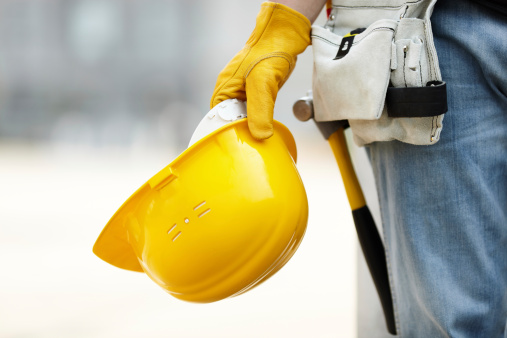Construction sites are easily considered one of the most dangerous working environments you can find yourself in. In fact, out of 4,206 worker fatalities in 2010, over 18% were in the field of construction. There are four main categories, also known as the “fatal four” injuries, that have been responsible for over 50% of construction worker deaths in 2010. These “fatal four” injuries are falls, electrocutions, being struck by object, and getting caught-in/between two objects.
The Occupational Safety & Health Administration (OSHA) is a federal agency in charge of overseeing job safety throughout the country. OSHA standards may sometimes seem a bit extreme, but they are in place for employee safety, and it’s in everyone’s best interest to follow their rules. OSHA has quite a few standards to help prevent the “fatal four.” Here are just a few:
Falls – Falls can often become deadly, even from a ladder that’s up a few feet. Ladders are actually the most frequently used equipment in the industry; they can be used on all forms of engineering projects, as well as home renovations. Unfortunately, many workers fail to use fall protection because they don’t believe they’re at a dangerous enough height. This is always unsafe, since you can injure yourself from only a few feet off of the ground, and the possibility of death increases with each foot.
OSHA recommends using only OSHA-approved ladders, to regularly inspect all ladders and tools for damage, and to never put more weight on the object than necessary. In addition, if the ladder is taller than a one-story building, workers should use fall protection harnesses to guarantee their safety in the event of a fall.
Electrocutions – Almost every construction worker works with electricity, since nearly every building they are constructing will need a source of energy. Since electricity is the most reliable and universal power source, workers will inevitably need to work with it, and, more importantly, protect themselves from it. OSHA’s standards require important grounding to be done, which helps control the source of electricity.
There are also protective pieces of equipment that reroute a potentially dangerous current, which could save an employee’s life. OSHA enforces the use of work gloves at all times when handling live wires or other charged items, and insulation and enclosure are also paramount.
Struck by Object – In construction, workers are surrounded with heavy steel beams, two by fours of solid wood, large glass windows and giant slabs of sheet rock. In this environment, an object falling or spiraling out of control can become a large and deadly weapon.
OSHA recommends that employees wear eye and head protection at all times. Hard hats and safety glasses can help reduce injury in many situations. Maintaining a clean, organized site will actually go farther than you think, and leaves employees in a much safer work environment.
Caught-in/between – The last danger of the “fatal four” is being caught in or between large objects, which accounted for only about 4% of deaths in 2010, but is still worth noting. OSHA recommends proper training of all equipment and written standards for safety to help prevent this sometimes fatal injury.
Ginarte has 30 years of experience handling cases regarding a variety of Construction Site Injuries. For any accident in a construction site resulting in injury it is important you contact us immediately.



